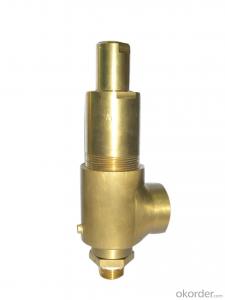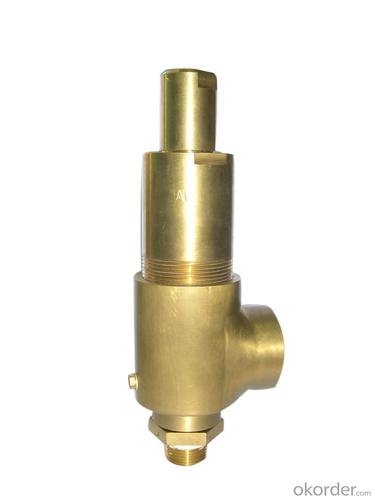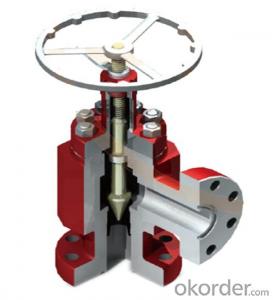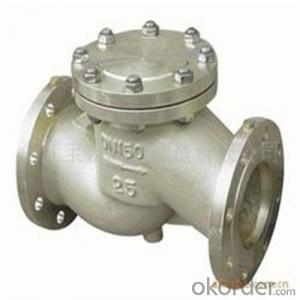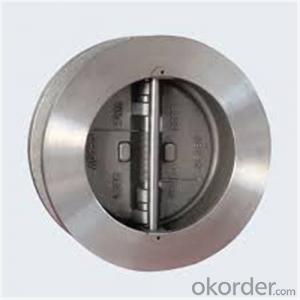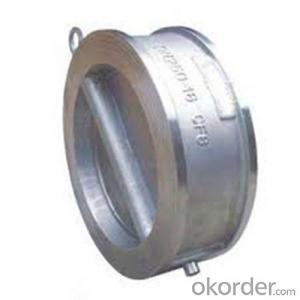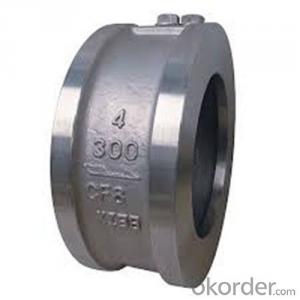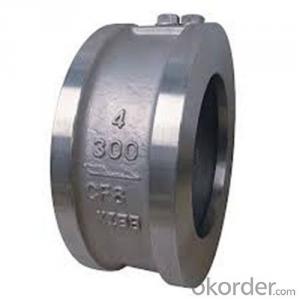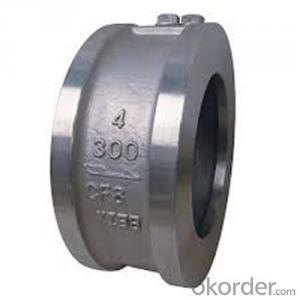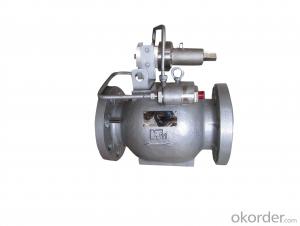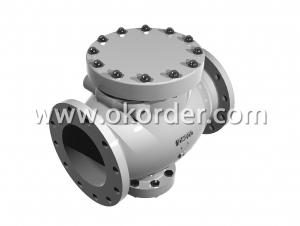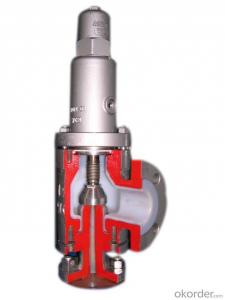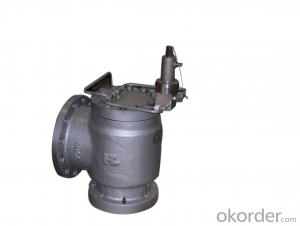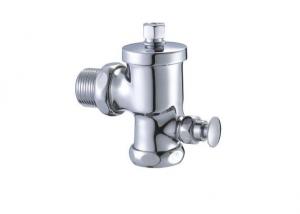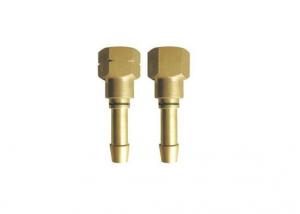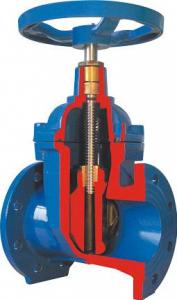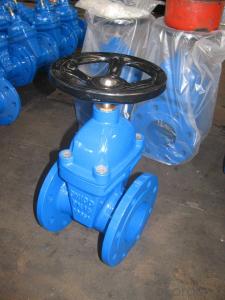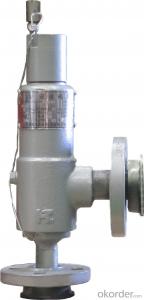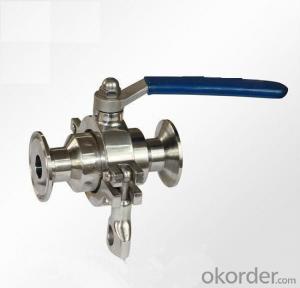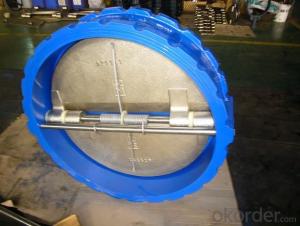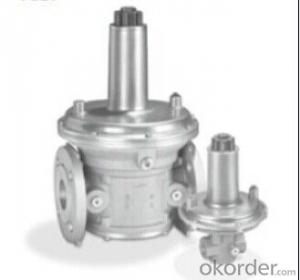High Performance Safty Valve
- Loading Port:
- China Main Port
- Payment Terms:
- TT OR LC
- Min Order Qty:
- -
- Supply Capability:
- -
OKorder Service Pledge
OKorder Financial Service
You Might Also Like
Application:
A pressure relief valve (PRV) is a safety device that relieves overpressure in a vessel or system. When the pressure of vessel or system increased beyond the specified design pressure or maximum allowable working pressure, PRV will be opened automaticly to relief the overpressure for proteding the vessel or system. The PRV will be closed if the pressure reached specified design pressure so that to ensure the normal operation and protect the vessel or system.
Our Pressure Relief Valve has been designed and manuractured according to following Standard:
♦ ISO 4123-1 Safety Devices for Portection Against Excessve Pressure
♦ API STD 526 Flanged Steel Pressure Relief Valves
♦ API STD 527 Seat Tightness of Pressure Relief Valves
♦ ASME Boiler and Pressure Vessel Code Section VIII Division 1, Rules for Construction of Pressure Vessels
Peformance:
♦ Type: Conventional, Bellows
♦ Size:1" D 2"- 8" T 10"
♦ Class:150lb~2500lb
♦ Temperature:-268~+538°C
♦ Fluid: Gas, Steam, and Liquid
♦ Material: Carbon steel, Stainless steel, Alloy steel
♦ The allowable tolerance of the set pressure: ≤±3%
♦ Overpressure: ≤10%(gas)/≤20%(liquid)
♦ Blowdown: ≤10%(gas)/≤20%(liquid)
♦ Tightness: conforms to API STD 527
Features:
♦The solid nozzle is screwed into the body, which makes the maintenance easy.
♦ The shape of the disc holder has been designed to enhance the effect of the fluid thrust for an instant lift of the disc.
♦ Blowdown control is provided with adjustable nuzzle ring only.
♦ The adequate terials and clearance between disc holder and guide , spindle and adjusting screw assures disc to lift successfully.
♦ The surface of both the disc and the nozzle seat are deposited with Stellite. Excellent flatness and surface finish of the seating surfaces by precision machining and lapping assure pressure relief valve to have high degree of seat tightness and long using life.
♦ The bellows of balanced bellows pressure relief valves can not only avoid and effect of variable back pressure in the system , but also protect spring and other trim components from corrosive media.
♦ Materials are chosen carefully , and the manufacture of the spring and the bellows has strict technological process. Each of them is tested and checked strictly.
- Q: Ok so I have a Honda Civic 97 lx and what happened was that when I did an oil change the next day the car started over heating, the car only had pure water and no coolant, the over heating part happened during noon when I was driving on the freeway the next day and not the night I made the oil change... After that I decided to put 50/50 coolant but the car still over heats, a friend told me that I probably needed to do a coolant system bleed, I try to do it but I couldn't find the bleeding valve or bleed screw... can anyone pls tell me where that valve or screw is located, I discovered a sort of valve that is covered by a black rubber cap , its next to the engine I don't know if that's what I'm looking for.....
- You can also get a good bit of the air out by removing one end of the upper radiator hose from the car and filling it with antifreeze. I recently had a 93 Civic in my shop that DID have a bleeder valve on it. If your car does the person above gave you the correct method of bleeding it.
- Q: I am 16, and i have a leaky heart valve. What makes it worse so i can try to prevent from it getting worse? please help.
- It would be very helpful to know which valve is involved. At your age a bicuspid aortic valve would be the most common congenital heart lesion. Regurgitation tends to increase over time no matter what is done. There is nothing that you will be able to do to prevent this from getting worse if that is the nature of the valvular abnormality. If you provide me with additional information I may be able to offer a more thorough and thoughtful response. I wish you the very best of health and in all things may God bless. JR
- Q: I need to know how to use a valve spring compressor, the type that looks like a c-clamp. I understand the fork side goes on top of the spring and the circular side goes on the valve to push and hold. There are also two little scoop things in the middle of the fork that i don't know what they are used for. If i can get a step by step instruction, you will get the best answer
- save yourself the hassle and throw that thing away go back to your local auto parts store and buy the l shaped spring compresser should be about twenty dollars make sure vehicle is at tdc remove rocker arm bolt remove rocker arms going valve by valve do not mix them up must go in exactly the same order they came out now lightly tap the top of valve with a rubber mallet will help loosen retainers place compresser on rocker arm stud take r.a. nut and tighten till valve locks fall out or can be removed very small dont lose use compressed air to hold valves in place at tdc sorry that should have been first not hard but not easy to do rebuilt 350 motor from the guts out spent alot of money on spring compressers only to find out the simplest one worked the best the one like u got will give u hell i tried napas version craftsman all of them trust me use the L bar
- Q: Our water heater (bought in 2007 so still fairly new still under warranty luckily) seems to release water from the pressure release valve quite frequently. Everyone seems to say that it shouldn't do it often and ours probably does it a couple times per day. 2 main questions - 1. Is there really a risk of too much pressure building up and the water heater exploding (that's what the sales guy at Lowe's said) and 2. Any idea what the problem might be/what we should check out?
- I doubt that there is any chance of the water heater exploding since the safety valve is leaking. Have you checked the water temperature settings? After no hot water has been used for a while, run some hot water and check the temperature. If it is near boiling, the you need to check the settings. It could be just a faulty relief valve which leaks when the water surges. When there is high water flow that stops suddenly the water pressure will surge for a very short time. Try opening the bath tub faucets fully and then shut them off quickly while some one watched the heater to see if it leaks. I hope this helps.
- Q: Why do we use in chilled water pipe network utilizing 2 way valves on all terminals except the last terminal we use a 3 way valve, also another question what does a pump shutt off pressure means
- A 3 way valve has water continuously going either to the cooling coil or back to the return loop. This keeps a constant flow of chilled water available in the entire system for the coils to have chilled water immediately, when called for. Without the 3 way valve, chilled water would absorb heat while sitting the lines waiting to be used. Pump shut off pressure can mean the pressure for operating a switch on a water main so the line can not be over pressurized.
- Q: i have a 04 kia sadona i have been having issues with the van overheating someone told me to open the bleeder valve and let it drain then refill leave the valve open and if i see bubbles in the radiator than its a blown head gasket. is this true? is there a bleeder valve on this and if so where is it located? its not on the thermostat housing i allready replaced the thermostat.
- Remove the radiator cap when cold and run the engine. Have someone rev the engine while the transmission is in park (with the parking brake ON), and you watch in the top of the radiator for bubbles. It may take a few seconds from the time they rev till the bubbles rise to the top.
- Q: the intake maniford tuning imt valve is stuck open how do i fix the problem
- Remove it and clean it.
- Q: I have recently been diagnosed with Endometriosis within the last 2 years. I have also had Mitral Valve Prolapse (MVP) for the past 10 years. ... Anyways... I was reading in a brochure for Endometrosis that there is a commonality between having those two diseases. If you know of the reasoning behind this I would be very interested in knowing. As I have yet to find an answer yet. I am just curious why having one will give you a larger likley hood to get the other. Thanks for your time and answers!
- I doubt there is a connection, since many men have mvp, but obviously don't have endometriosis. It's probably just a coincidence.
- Q: I am having a leaky valve is that normal? the doctor said that it is normal what do i do?
- Like most everything, there are degrees of valvular leakage. A valve can be leaking a lot or a very little amount. Valves are a biologic mechanism and therefore are not precisely manufactured with some areas that don't ideally fit, leading to minor leakage. If you were to take 100 random people off of the street and do an echocardiogram, the vast majority would have one valve or the other that had at least some trivial leakage. Therefore if the majority of people have the same thing and it is not a pathological process, it is essentially normal. Next, certain valves leaking are much more important that other valves. Moderate leakage of the tricuspid valve for instance is not a particularly important finding. But moderate leakage of the aortic valve is a very big deal that requires close medical attention. In sum, valves with trivial leakage do not require serial exams for follow up or any special measures like antibiotics before dental procedures. Since this is such a common finding, it is reasonable to consider this a normal finding. Not knowing precisely what the result was on your echo, I can not specifically advise you. At your next doctor's appointment make a note for yourself to ask him/her for clarification. Good luck.
- Q: Why can't i start my valve?
- makes no sense try again
Send your message to us
High Performance Safty Valve
- Loading Port:
- China Main Port
- Payment Terms:
- TT OR LC
- Min Order Qty:
- -
- Supply Capability:
- -
OKorder Service Pledge
OKorder Financial Service
Similar products
Hot products
Hot Searches
Related keywords
